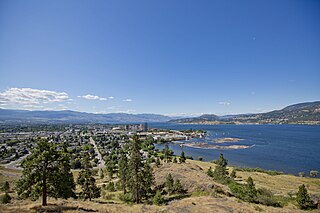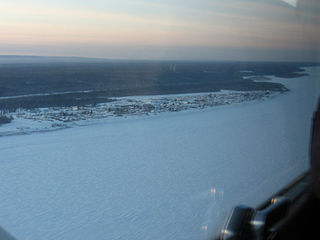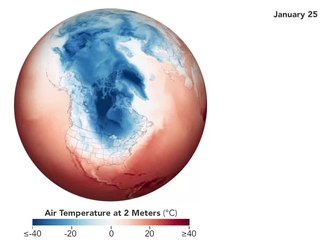| Year | Extreme maximum | Extreme minimum |
|---|
| Location | Temperature | Location | Temperature |
|---|
| 2024 | | | Keg River, Alberta and Old Crow, Yukon | −51.5 °C (−61 °F) |
| 2023 | Lytton, British Columbia | 42.2 °C (108 °F) | Rabbit Kettle, Northwest Territories | −53.4 °C (−64 °F) |
| 2022 | Lytton, British Columbia | 42.2 °C (108 °F) | Pelly Ranch, Yukon | −53.3 °C (−64 °F) |
| 2021 | Lytton, British Columbia | 49.6 °C (121 °F) | Wekweeti, Northwest Territories (NWT) | −52.0 °C (−62 °F) |
| 2020 | Lytton, British Columbia | 41.4 °C (107 °F) | Thomsen River, NWT | −51.8 °C (−61 °F) |
| 2019 | Trail, British Columbia | 39.2 °C (103 °F) | Shepherd Bay, Nunavut | −48.8 °C (−56 °F) |
| 2018 | Moose Jaw, Saskatchewan | 42.3 °C (108 °F) | Kugaaruk, Nunavut | −51.8 °C (−61 °F) |
| 2017 | Hedley, British Columbia | 41.0 °C (106 °F) | Mould Bay, Northwest Territories | −54.7 °C (−66 °F) |
| 2016 | Oliver, British Columbia | 39.0 °C (102 °F) | Eureka, Nunavut | −47.8 °C (−54 °F) |
| 2015 | Hedley, British Columbia | 42.0 °C (108 °F) | Old Crow, Yukon | −49.7 °C (−57 °F) |
| 2014 | Ashcroft, British Columbia | 41.7 °C (107 °F) | Eureka, Nunavut | −50.4 °C (−59 °F) |
| 2013 | Lytton, British Columbia | 40.5 °C (105 °F) | Eureka, Nunavut | −51.5 °C (−61 °F) |
| 2012 | Lytton, British Columbia | 40.3 °C (105 °F) | Old Crow, Yukon | −52.1 °C (−62 °F) |
| 2011 | Grimsby, Ontario | 38.5 °C (101 °F) | Watson Lake, Yukon | −52.8 °C (−63 °F) |
| 2010 | Ashcroft, British Columbia | 38.8 °C (102 °F) | Old Crow, Yukon | −47.6 °C (−54 °F) |
| 2009 | Gold River, British Columbia | 41.5 °C (107 °F) | McQuesten, Yukon | −52.0 °C (−62 °F) |
| 2008 | Lytton, British Columbia | 40.4 °C (105 °F) | Mayo, Yukon | −53.8 °C (−65 °F) |
| 2007 | Woodrow, Saskatchewan | 43.0 °C (109 °F) | Ogilvie River, Yukon | −54.5 °C (−66 °F) |
| 2006 | Lytton, British Columbia | 42.1 °C (108 °F) | Fort Good Hope, Northwest Territories | −50.0 °C (−58 °F) |
| 2005 | Frontier, Saskatchewan | 39.5 °C (103 °F) | Stewart Crossing and Burwash Landing, Yukon | −55.0 °C (−67 °F) |
| 2004 | Lytton, British Columbia | 41.8 °C (107 °F) | Pelly Ranch and Ogilvie River, Yukon | −54.5 °C (−66 °F) |
| 2003 | Elrose, Saskatchewan | 41.0 °C (106 °F) | La Grande 4, Quebec | −50.4 °C (−59 °F) |
| 2002 | Osoyoos, British Columbia | 42.0 °C (108 °F) | Key Lake, Saskatchewan | −51.5 °C (−61 °F) |
| 2001 | Osoyoos, British Columbia | 41.7 °C (107 °F) | Eureka, Nunavut | −51.2 °C (−60 °F) |
| 2000 | Osoyoos, British Columbia | 38.8 °C (102 °F) | Nahanni National Park Reserve, Northwest Territories | −52.3 °C (−62 °F) |
| 1999 | Spences Bridge, British Columbia | 39.0 °C (102 °F) | Ross River, Yukon | −57.0 °C (−71 °F) |
| 1998 | Osoyoos, British Columbia | 42.8 °C (109 °F) | Stewart Crossing, Yukon | −55.0 °C (−67 °F) |
| 1997 | Osoyoos, British Columbia | 39.6 °C (103 °F) | Pelly Ranch, Yukon | −55.0 °C (−67 °F) |
| 1996 | Osoyoos, British Columbia | 41.2 °C (106 °F) | Pelly Ranch, Yukon | −55.0 °C (−67 °F) |
| 1995 | Smoky Falls, Ontario and Lake Cowichan, British Columbia | 40.0 °C (104 °F) | Sachs Harbour, Northwest Territories | −54.6 °C (−66 °F) |
| 1994 | Osoyoos, British Columbia | 42.6 °C (109 °F) | Fort Good Hope, Northwest Territories | −52.0 °C (−62 °F) |
| 1993 | Spences Bridge, British Columbia | 37.5 °C (100 °F) | Old Crow, Yukon | −57.0 °C (−71 °F) |
| 1992 | Osoyoos, British Columbia | 39.8 °C (104 °F) | Shepherd Bay, Nunavut | −50.0 °C (−58 °F) |
| 1991 | Empress and Bindloss, Alberta | 40.0 °C (104 °F) | Pelly Ranch, Yukon | −54.0 °C (−65 °F) |
| 1990 | Lytton, British Columbia | 40.2 °C (104 °F) | Pelly Ranch, Yukon | −57.0 °C (−71 °F) |
| 1989 | Turtle Mountain, Manitoba | 40.5 °C (105 °F) | Ogilvie River, Yukon | −56.0 °C (−69 °F) |
| 1988 | Kincaid, Saskatchewan | 43.5 °C (110 °F) | Shepherd Bay, Nunavut | −55.6 °C (−68 °F) |
| 1987 | Boston Bar, British Columbia | 42.0 °C (108 °F) | Eureka, Nunavut | −55.3 °C (−68 °F) |
| 1986 | Boston Bar, British Columbia | 41.5 °C (107 °F) | Swift River, Yukon | −54.0 °C (−65 °F) |
| 1985 | Lytton, British Columbia | 41.0 °C (106 °F) | Watson Lake, Yukon | −53.3 °C (−64 °F) |
| 1984 | Consul, Saskatchewan | 43.0 °C (109 °F) | Pelly Ranch, Yukon | −55.0 °C (−67 °F) |
| 1983 | Midale, Saskatchewan | 41.5 °C (107 °F) | Stewart River, Yukon | −58.0 °C (−72 °F) |
| 1982 | Boston Bar and Spences Bridge, British Columbia | 39.5 °C (103 °F) | Ross River, Yukon | −58.5 °C (−73 °F) |
| 1981 | Boston Bar and Lytton, British Columbia | 41.5 °C (107 °F) | Stewart Crossing, Yukon | −55.5 °C (−68 °F) |
| 1980 | Francis, Saskatchewan | 40.0 °C (104 °F) | Pelly Ranch, Yukon | −58.0 °C (−72 °F) |
| 1979 | Kettle Valley, British Columbia | 41.5 °C (107 °F) | Pelly Ranch, Yukon | −58.5 °C (−73 °F) |
| 1978 | Boston Bar, British Columbia | 41.5 °C (107 °F) | Pelly Ranch, Yukon | −54.4 °C (−66 °F) |
| 1977 | Salmo, British Columbia | 41.5 °C (107 °F) | Eagle River, Yukon | −53.9 °C (−65 °F) |
| 1976 | Waskada, Manitoba | 39.4 °C (103 °F) | Ross River, Yukon | −56.7 °C (−70 °F) |
| 1975 | Turbine, Ontario | 42.8 °C (109 °F) | Old Crow and Ross River, Yukon | −59.4 °C (−75 °F) |
| 1974 | Kamloops, British Columbia | 41.1 °C (106 °F) | Mayo, Yukon | −56.7 °C (−70 °F) |
| 1973 | Altawan, Alberta | 40.0 °C (104 °F) | Shepherd Bay, Nunavut | −57.8 °C (−72 °F) |
| 1972 | Lillooet, British Columbia and Lumsden, Saskatchewan | 40.0 °C (104 °F) | Ross River, Yukon | −56.7 °C (−70 °F) |
| 1971 | Lytton, British Columbia | 42.2 °C (108 °F) | Pelly Ranch and Mayo, Yukon | −58.3 °C (−73 °F) |
| 1970 | Altawan, Alberta | 41.1 °C (106 °F) | Pelly Ranch, Yukon | −53.9 °C (−65 °F) |
| 1969 | Willow Creek, Saskatchewan | 41.7 °C (107 °F) | Ross River, Yukon | −57.2 °C (−71 °F) |
| 1968 | Boston Bar, British Columbia | 40.0 °C (104 °F) | Pelly Ranch, Yukon | −60.0 °C (−76 °F) |
| 1967 | Lytton, British Columbia | 41.1 °C (106 °F) | Pelly Ranch, Yukon | −56.7 °C (−70 °F) |
| 1966 | Yellow Grass, Saskatchewan | 39.4 °C (103 °F) | Pelly Ranch and Carmacks, Yukon | −57.8 °C (−72 °F) |
| 1965 | Ashcroft, British Columbia | 41.7 °C (107 °F) | Snag, Yukon | −56.2 °C (−69 °F) |
| 1964 | Sturgeon Crossing, Saskatchewan | 41.7 °C (107 °F) | Isachsen, Nunavut | −53.3 °C (−64 °F) |
| 1963 | East Poplar River, Willow Creek, and Cardross, Saskatchewan | 39.4 °C (103 °F) | Mayo, Yukon | −57.2 °C (−71 °F) |
| 1962 | Lytton, British Columbia | 38.9 °C (102 °F) | Pelly Ranch, Yukon | −58.9 °C (−74 °F) |
| 1961 | Maple Creek, Saskatchewan | 43.3 °C (110 °F) | Pelly Ranch and Dawson City, Yukon | −51.2 °C (−60 °F) |
| 1960 | Newgate, British Columbia | 43.3 °C (110 °F) | Shingle Point, Yukon, Eureka, Nunavut, and Fort McPherson, Northwest Territories | −51.2 °C (−60 °F) |
| 1959 | Newgate, British Columbia | 41.1 °C (106 °F) | Pelly Ranch, Yukon | −57.8 °C (−72 °F) |
| 1958 | Midale, Saskatchewan | 41.7 °C (107 °F) | Lake Hazen, Nunavut | −56.2 °C (−69 °F) |
| 1957 | Saskatoon, Saskatchewan | 38.9 °C (102 °F) | Pelly Ranch, Yukon | −54.4 °C (−66 °F) |
| 1956 | Barriere & Lytton, British Columbia | 41.1 °C (106 °F) | Pelly Ranch, Yukon | −55.6 °C (−68 °F) |
| 1955 | Ramsey, Ontario & Oliver, British Columbia | 39.4 °C (103 °F) | Old Crow, Yukon | −55.6 °C (−68 °F) |
| 1954 | Foremost, Alberta | 40.0 °C (104 °F) | Frenchman Butte, Saskatchewan & Snag, Yukon | −52.2 °C (−62 °F) |
| 1953 | Willow Creek, Saskatchewan | 42.2 °C (108 °F) | Elmworth, Alberta | −53.3 °C (−64 °F) |
| 1952 | Midale, Saskatchewan | 40.6 °C (105 °F) | Snag, Yukon | −60.9 °C (−78 °F) |
| 1951 | St Albans, Manitoba & Port Alberni, British Columbia | 40.6 °C (105 °F) | Fort Good Hope, Northwest Territories & Isachsen, Nunavut | −52.8 °C (−63 °F) |
| 1950 | Lytton & Port Alberni, British Columbia | 38.3 °C (101 °F) | Snag, Yukon | −56.2 °C (−69 °F) |
| 1949 | Rosetown, Saskatchewan | 43.3 °C (110 °F) | Snag, Yukon | −56.2 °C (−69 °F) |
| 1948 | Pennant, Saskatchewan | 41.7 °C (107 °F) | Eureka, Nunavut | −52.8 °C (−63 °F) |
| 1947 | Semans, Saskatchewan | 40.0 °C (104 °F) | Snag, Yukon | −63.0 °C (−81 °F) |
| 1946 | Beechy, Saskatchewan | 42.8 °C (109 °F) | Fort MacKenzie, Quebec | −51.2 °C (−60 °F) |
| 1945 | Waneta, British Columbia & Fort Qu'Appelle, Saskatchewan | 41.1 °C (106 °F) | St. Walburg, Saskatchewan | −50.0 °C (−58 °F) |
| 1944 | Skagit River, British Columbia & Kimberley, British Columbia | 42.2 °C (108 °F) | Passe Dangereuse Dam, Quebec | −50.0 °C (−58 °F) |
| 1943 | Rosetown, Saskatchewan | 40.0 °C (104 °F) | Mayo, Yukon | −55.0 °C (−67 °F) |
| 1942 | Cumberland, British Columbia | 43.9 °C (111 °F) | Heaslip, Ontario | −50.0 °C (−58 °F) |
| 1941 | Lytton, British Columbia, Lillooet, British Columbia& Barriere, British Columbia | 44.4 °C (112 °F) | Watson Lake, Yukon | −51.7 °C (−61 °F) |
| 1940 | Grand Forks, British Columbia | 42.2 °C (108 °F) | Watson Lake, Yukon | −50.6 °C (−59 °F) |
| 1939 | Oliver, British Columbia | 43.3 °C (110 °F) | Elmworth, Alberta & Watson Lake, Yukon | −52.2 °C (−62 °F) |
| 1938 | Barriere, British Columbia | 42.8 °C (109 °F) | Fort Good Hope, Northwest Territories | −52.2 °C (−62 °F) |
| 1937 | Yellow Grass, Saskatchewan & Midale, Saskatchewan | 45.0 °C (113 °F) | Fort Good Hope, Northwest Territories | −51.2 °C (−60 °F) |
| 1936 | St Albans (Treesbank), Manitoba & Emerson, Manitoba | 44.4 °C (112 °F) | Fort Resolution, Northwest Territories | −59.4 °C (−75 °F) |
| 1935 | Lillooet, British Columbia | 41.1 °C (106 °F) | Iroquois Falls, Ontario | −58.3 °C (−73 °F) |
| 1934 | Rock Creek, British Columbia | 43.9 °C (111 °F) | Fort Vermilion, Alberta | −57.8 °C (−72 °F) |
| 1933 | Leader, Saskatchewan, Outlook, Saskatchewan, Shaunavon, Saskatchewan, Pennant, Saskatchewan, and Lumsden, Saskatchewan | 41.1 °C (106 °F) | Fort Vermilion, Alberta | −57.8 °C (−72 °F) |
| 1932 | Fort Qu'Appelle, Saskatchewan | 41.1 °C (106 °F) | Mayo, Yukon | −53.9 °C (−65 °F) |
| 1931 | Fort Qu'Appelle, Saskatchewan and Aneroid, Saskatchewan | 43.3 °C (110 °F) | Fort Good Hope, Northwest Territories | −49.4 °C (−57 °F) |
| 1930 | Fort Qu'Appelle, Saskatchewan | 41.1 °C (106 °F) | Witchekan, Saskatchewan | −53.9 °C (−65 °F) |
| 1929 | Fort Qu'Appelle, Saskatchewan, and Greenwood, British Columbia | 42.2 °C (108 °F) | Rocky Mountain House, Alberta | −53.3 °C (−64 °F) |
| 1928 | Lillooet, British Columbia and Greenwood, British Columbia | 41.7 °C (107 °F) | Vanderhoof, British Columbia & Fort Vermilion, Alberta | −50.6 °C (−59 °F) |
| 1927 | Greenwood, British Columbia | 43.3 °C (110 °F) | Fort Good Hope, Northwest Territories | −51.7 °C (−61 °F) |
| 1926 | Fort Qu'Appelle, Saskatchewan | 43.3 °C (110 °F) | Doucet, Quebec | −48.9 °C (−56 °F) |
| 1925 | Fort Qu'Appelle, Saskatchewan | 41.1 °C (106 °F) | Mayo, Yukon | −57.2 °C (−71 °F) |
| 1924 | Waneta, British Columbia and Grand Forks, British Columbia | 42.8 °C (109 °F) | Fort Vermilion, Alberta | −52.2 °C (−62 °F) |
| 1923 | Newgate, British Columbia and Grand Forks, British Columbia | 38.9 °C (102 °F) | Doucet, Quebec | −54.4 °C (−66 °F) |
| 1922 | St Albans, Manitoba and Grand Forks, British Columbia | 40.0 °C (104 °F) | Fort Resolution, Northwest Territories | −52.8 °C (−63 °F) |
| 1921 | St Albans, Manitoba, Bassano Dam, Alberta, and Vauxhall, Alberta | 40.6 °C (105 °F) | Fort Good Hope, Northwest Territories | −50.6 °C (−59 °F) |
| 1920 | Fort Qu'Appelle, Saskatchewan | 41.1 °C (106 °F) | Stry, Alberta | −52.2 °C (−62 °F) |
| 1919 | Dauphin, Manitoba | 43.3 °C (110 °F) | Fort Vermilion, Alberta | −53.9 °C (−65 °F) |
| 1918 | Lillooet, British Columbia, London, Ontario, and Chatham, Ontario | 41.1 °C (106 °F) | Fort Smith, Northwest Territories | −57.2 °C (−71 °F) |
| 1917 | Jenner, Alberta | 42.2 °C (108 °F) | Fort Vermilion, Alberta | −57.2 °C (−71 °F) |
| 1916 | Iroquois Falls, Ontario | 41.1 °C (106 °F) | Fort Good Hope, Northwest Territories | −55.6 °C (−68 °F) |
| 1915 | Jenner, Alberta | 40.0 °C (104 °F) | Fort Smith, Northwest Territories | −49.4 °C (−57 °F) |
| 1914 | St Albans, Manitoba | 41.7 °C (107 °F) | Amos, Quebec | −52.8 °C (−63 °F) |
| 1913 | Ashcroft, British Columbia and Fort Frances, Ontario | 38.9 °C (102 °F) | Fort Vermilion, Alberta | −54.4 °C (−66 °F) |
| 1912 | St Albans, Manitoba | 40.0 °C (104 °F) | Dawson, Yukon | −52.2 °C (−62 °F) |
| 1911 | Scarborough, Ontario and Grimsby, Ontario | 40.6 °C (105 °F) | Fort Vermilion, Alberta | −60.6 °C (−77 °F) |
| 1910 | St Albans, Manitoba and Moosehorn, Manitoba | 41.7 °C (107 °F) | Fort Good Hope, Northwest Territories | −51.2 °C (−60 °F) |
| 1909 | Cannington, Saskatchewan | 40.0 °C (104 °F) | Dawson, Yukon | −53.9 °C (−65 °F) |
| 1908 | Spences Bridge, British Columbia | 42.2 °C (108 °F) | Fort Chipewyan, Alberta and Fort McPherson, Northwest Territories | −48.9 °C (−56 °F) |
| 1907 | Kitimat, British Columbia | 41.1 °C (106 °F) | Dawson, Yukon | −50.6 °C (−59 °F) |
| 1906 | Spences Bridge, British Columbia | 42.2 °C (108 °F) | Whitehorse, Yukon | −56.2 °C (−69 °F) |
| 1905 | Spences Bridge, British Columbia | 40.6 °C (105 °F) | Gleichen, Alberta and Kneehill, Alberta | −47.2 °C (−53 °F) |
| 1904 | Enderby, British Columbia | 39.4 °C (103 °F) | Dawson, Yukon | −50.0 °C (−58 °F) |
| 1903 | Spences Bridge, British Columbia | 38.9 °C (102 °F) | Dawson, Yukon | −51.7 °C (−61 °F) |
| 1902 | Spences Bridge, British Columbia | 38.3 °C (101 °F) | Fort Simpson, Northwest Territories | −46.7 °C (−52 °F) |
| 1901 | St Albans, Manitoba | 38.9 °C (102 °F) | Dawson, Yukon | −55.6 °C (−68 °F) |
| 1900 | Cannington, Saskatchewan | 43.3 °C (110 °F) | Fort McPherson, Northwest Territories | −51.7 °C (−61 °F) |












